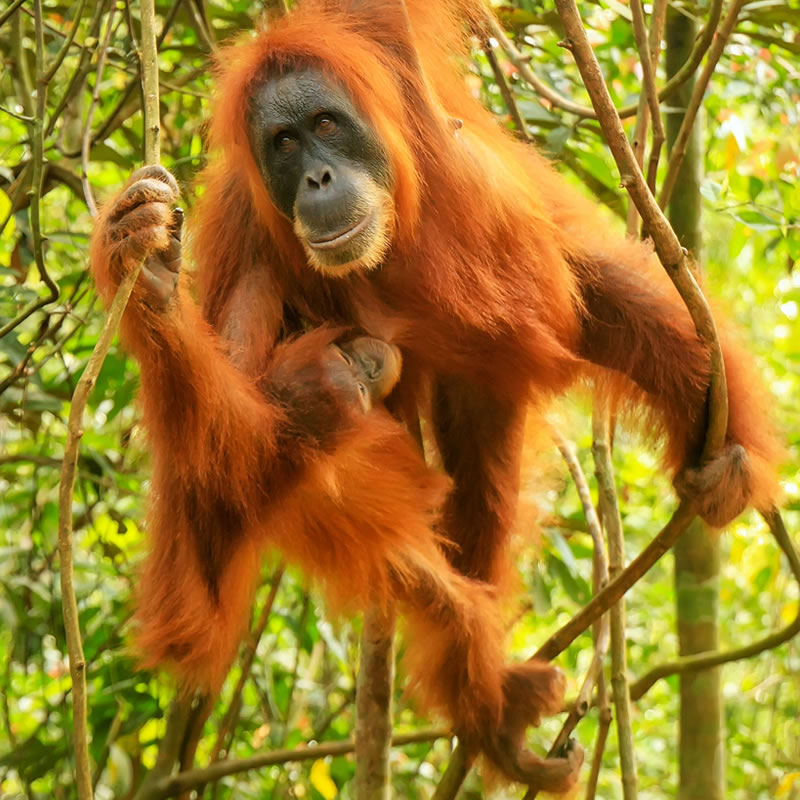
Scientific Name
Pongo abelii
Classification
| Kingdom | Animalia |
| Phylum | Chordata |
| Class | Mammalia |
| Order | Primates |
| Family | Hominidae |
| Genus | Pongo |
| Species | abelii |
IUCN Redlist Status

Location
Sumatran orangutans are located on the island of Sumatra. Sumatra is south of the Malay Peninsula on the mainland of southeast Asia.
Habitat
They inhabit tropical rainforests on the northern side of the island. Sumatran orangutans are arboreal, which means they spend most of their time in the trees.
Diet
Sumatran orangutans eat a wide variety of foods. Like humans, they are omnivorous, meaning they will eat both plants and some meat. These foods include fruits, like figs, insects and various plant matter.
Size
Sumatran orangutans grow to be sizes of 4 - 5 feet in height with females generally being smaller than males. They weigh between 100 - 200 pounds. Sumatran orangutans are generally smaller than their close relatives, Bornean orangutans.
Description
Orangutans have long orange hair that covers most of their bodies. Parts of their faces, hands and feet are hairless. Around their cheeks and nose areas orangutans may have beard-like hair growth, especially as they mature in age. Their arms are long and lanky which helps them swing through the trees of the rainforest. They have the ability to grab things with both their hands and their feet, which also helps them to move through the trees.
Reproduction
The gestation periods of females is approximately 7.5 - 8.5 months. This is very close to pregnancy periods of humans. Females will usually give birth to one infant, but at times two or more is possible.
Other Facts
Sumatran orangutans are critically endangered as listed on the IUCN Redlist. Their rainforest habitat is quickly disappearing from the island of Sumatra and unfortunately it is a race against time for them.
